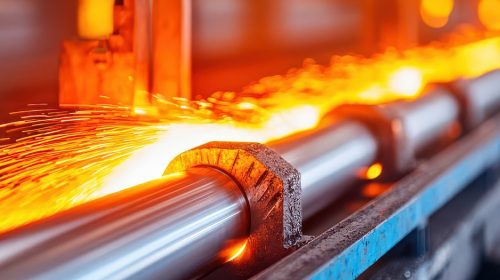Hydraulic oils are somewhat compressible which can cause problems in hydraulic systems. Aspects like temperature changes and the presence of air bubbles in the hydraulic oil influence compressibility which can lead to uncontrolled decompression and other problems related to compressibility.
Hydraulic oils are relatively incompressible, but volume reductions can be significant depending on pressure, temperature, type of fluid and system design.
Compressibility and Bulk Modulus of hydraulic oils
Compressibility (k) is a measure of the volume reduction due to pressure alone. It is usually expressed by the Bulk Modulus (β), which is the reciprocal of compressibility (k=1/β).
The Bulk Modulus expresses the resistance of a fluid to a decrease in volume due to compression. The Bulk modulus varies with pressure, temperature, molecular structure, gas content and elasticity of the hydraulic system.
Thermal expansion of hydraulic oils
The volume of a specific hydraulic oil not only changes due to pressure changes, but also due to changes in temperature. When the temperature increases, the density of the oil decreases, leading to an increase in volume. This degree of expansion is expressed as the coefficient of thermal expansion (α). This coefficient is the ratio of the relative change of volume to a change in temperature.
How air bubbles affect compressibility
The presence of air bubbles in the hydraulic fluid increases the compressibility. In other words, the dissolved air decreases the bulk modulus of mineral oils and therefore decreases the resistance to compression. This effect is especially present at low operating pressures, as a fluid is pressurized, the entrained air is compressed and has less influence on the compressibility.
How much effect entrained air has on the Bulk Modulus can be seen in figure 1.

For example, at a low pressure (50 Bar) (1 Bar = 1·10-1 MPa) and 0.5 %-Vol. of undissolved air the Bulk Modulus is halved. The volume reductions for a mineral oil (ISO VG 46) at 20 ºC with undissolved air in the system is shown in figure 2.

How system design affects compressibility
The elasticity of the system adds up to the total compressibility for each separate component in a hydraulic system (Bulk Modulus is reduced). Even if the hydraulic fluid gives the dominant contribution to the effective bulk modulus, the contributions from other system elements (pipes, sealings, valves, flexible hoses, etc..) may be significant as well. This is especially the case if, for example, (flexible) hoses are used instead of pipes.
The negative effects of compressibility
In general hydraulic fluids are considered incompressible. However mineral oils are somewhat compressible which can cause problems in hydraulic systems like, loss in efficiency (power loss), cavitation (which may cause metal fracture), stress corrosion and fatigue. The compression of hydraulic fluids results in storage of energy, a compressed fluid has the ability to work. If decompression is not controlled, the stored energy is released instantaneously. This sudden release of energy creates stresses, noise and can cause damage to hydraulic components. This effect can be controlled by good system design.
How to avoid high compressibility in hydraulic fluid systems
In practice the main requirement for an acceptable low compressibility is fulfilled by ensuring the hydraulic fluid is kept free from entrained air. Good air release properties significantly reduce the compressibility of the fluid and thus reduce the volume reduction and accompanying problems.






















